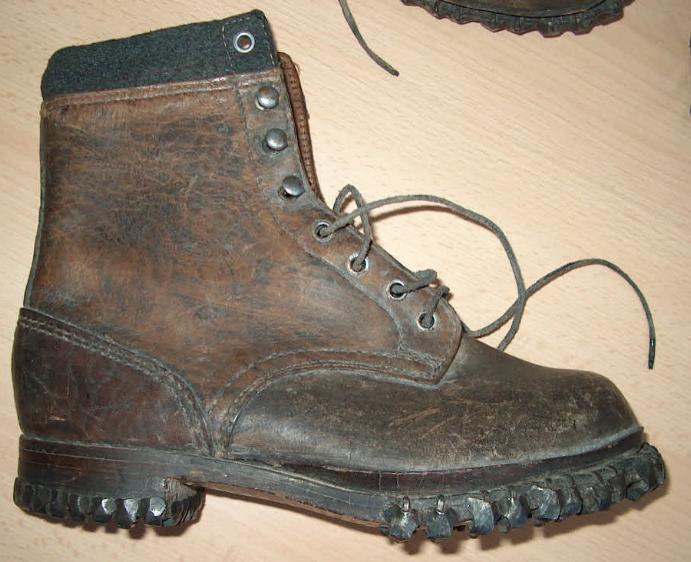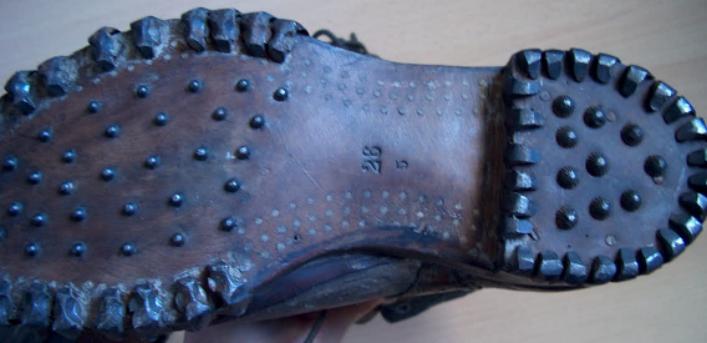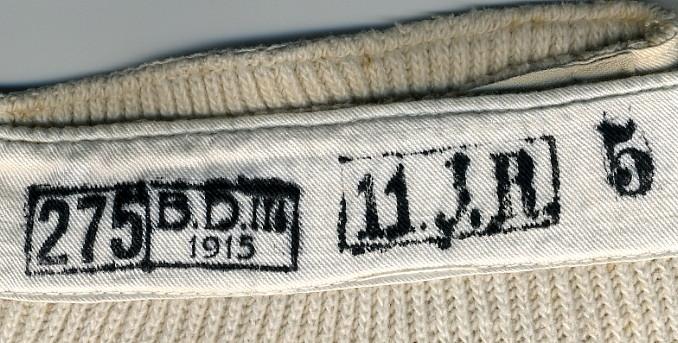-
Posts
2,962 -
Joined
-
Last visited
Content Type
Profiles
Forums
Blogs
Gallery
Events
Store
Posts posted by Chip
-
-
Normally, issued shoulder straps will have backing material in the color of the uniform. M15 shoulder straps for the Friedensuniform should be backed in feldgrau cloth. They should also be 4.5 cm wide. These appear to be the same width as the prewar straps they are shown with. This leads me to think that these are private purchase pieces.
Chip
0 -
Poulton,
The IR.168 straps are for a Hessian one year volunteer's Mantel. The FAR.46 was a Niedersächsisches regiment.
Normally, most prewar type straps with Roman numerals are from Handwerker of the Bekleidungsämter. However, I'm not so sure about your XVIII A.K. pair. I looked in the 1914 edition of "Führer durch Heer und Flotte" and it did not list a Bekleidungsamt for that corps. Pietsch specifically said that they didn't have one. 'Das Deutsche Heer" said that the Handwerker of the Bekleidungsämter wore the shoulder straps in the corps color. The corps color for the XVIII A.K. was not white. So, I am stumped for the moment and will have to keep looking for an explanation.
Chip
0 -
Chris,
Laschen were not introduced in 1916. That was the Schlaufen for the Bluse. The Laschen for the Bluse were introduced in order to roll the shoulder straps, not as a loop to put the Lasche through.
I believe your dark blue straps with yellow "12" are for the old dark blue Bavarian Mantel. This was the pattern that proceeded the gray Mantel.
Chip
0 -
I'll post my issue one if the sun ever shines again. Been raining all day.
Chip
0 -
I agree with Charles, except for the middle photo. Normally, generals wore their collar insignia on a backing the same color (Abzeichentuch) as the rest of the collar on a Kleine Rock. Of course, generals could do whatever they wanted with their uniforms, but the insignia in this photo is on a much darker backing than the collar, so I am assuming it is red.
Chip
0 -
A good issue pair of mountain boots comes in handy.


 0
0 -
The officer's Litewka and Kleine Rock both had collar patches (Kragenpatten). There are several ways to tell the two jackets apart, but the most noticeable ones are the basic cloth, light gray vs field gray and the collars, which were of the same light gray wool on the Litewka, but were made from resedagrün Abzeichentuch on the Kleine Rock. The Bavarian models were different in that the Litewka was a medium blue with a somewhat different cut. The Bavarian Kleine Rock had a collar in the same field gray as the rest of the jacket, plus it was supposed to have the Bavarian state colored braid (so-called Aschingerborte) around the collar.
General officer's had red linings and their unique collar insignia.
Chip
0 -
Chris,
Is that 84/98 n/A marked to a Feld Luftschiff Abteilung?
Chip
0 -
I have none!!!!!!!!!!!!!!!
Now, that's hard to believe!
 0
0 -
I'm with you Eric. I only like to give such price opinions through PMs. After all, it's just my opinion, based on my knowledge (or gut). So it's not worth much, therefore I don't do it.
Chip
0 -
Veteran's flags can be quite beautiful too, but they would not bring near the money that a real regimental flag would bring. The guys with the ten flags you mention are quite the capitalists (or gougers).

Chip
0 -
Eric,
Has there been some lettering scraped off on the lid? Also, is the inside plain or does it have compartments?
Thanks,
Chip
0 -
Back view. Note the early brass rivets and maker mark "T. BITGEN / KARLSRUHE".
The maker is actually "L.Ritgen", a big supplier of leather goods to the army. The company is also known to have made holsters of all types, cartridge pouches, map cases, backpacks, bayonet frogs and phone cases, with items dated back to 1913 and going through 1918.
Chip
0 -
Nice M17's (or if you prefer to call them M18's) with chinstraps seem to always sell in the $1,000 - $1,400 price range without any problem. A 1,000 Euro price does not surprise me.
0 -
That green glass one is really cool!
Absolutely! ....and that issue M07 screw-top is not too shabby either!
0 -
I've seen these in museums in Europe and I know an American collector that has one. The amount of workmanship and detail is truly impressive. The only drawback with them is the silk base material, which is prone to deterioration due to the method of processing silk during that period.
Chip
0 -
That's a number "9" on his collar. The Armierungs-Batl. were organized in February of 1915. They were originally clothed in old Dunkelblau era uniforms and caps or Drillich. An order of April 1915 prescribed a white armband with "Armierungs-Bataillon (unit number)" or abbreviated "Arm.Batl.(unit number)". Later in 1916 (Bavaria) and 1917 (Prussia), the armband color was switched to gray, but armbands were soon dropped all together.
The fieldgray army uniform was adopted in the Fall of 1915. Kraus says nothing about insignia of any kind other than the armbands, though similar units (like Straßenbau-Einheiten) wore plain shoulder straps.
Chip
0 -
Darren,
Yes, there were other letters used. I believe that each factory had inspectors with their own stamps. And yes they did have crowns over them.
Chip
0 -
I don't think that is a Württemberg mark. It appears just to be a normal inspection stamp (crown over a Gothic "D"). Most of these 84/98n/A S bayonets did not have the state stamp and date. I don't know what the other numbers mean. Thought they look to be period, they are not in the form of a typical unit mark.
Chip
0 -
Chris,
Unbelievable stuff! I can't imagine how much this sort of outstanding paperwork must cost
 . You have got to have the all time premier collection when it comes to WWI German documents. Impressive!
. You have got to have the all time premier collection when it comes to WWI German documents. Impressive! 
Chip
0 -
I always thought it was a Navy thing. Look at this postcard -- your thoughts?
Joe,
That's pretty interesting. Certainly not a navy marking. In this case, I think the stamp means, "Proviant-Kolonne 6, II.Bayerisches Armee Korps".
Chip
0 -
So far, I have logged twenty different manufacturer codes spanning the years 1915-1918. I have no idea who the manufacturers are. Perhaps that information is buried somewhere in the Bavarian decrees or orders. There would have to have existed some index.
Chip
0 -
The Bavarians used the B.A. stamp in most cases, but at some point during the war (1915 I think), they came out with a Hersteller code, similar to the WWII German manufacturer codes. As far as I know (from the examples I have seen), this was only done by the Bekleidungs Depot of the III.b.A.K.. So what you see in the marking is a rectangle intersected in the middle by a vertical line. On the left half is the vendor code and on the right is "B.D.III" over the date. I've seen this on everything from Bluse, to Unterhose, to cartridge pouches and pretty much any other issued item coming out of that corps depot.
Chip

 0
0 -
An M15 Einheitsmantel took the the same straps as those on the Bluse. Any M15 pair would do. The straps were not sewn to the loops, but rather were stitched to the shoulder seam. The loop (Schlaufe) was a retainer for a rolled or folded strap.
Chip
0




Bavarian shoulder strap question....
in Germany: Imperial Uniforms, Headwear, Insignia & Personal Equipment
Posted
The old Bavarian Mantel took dark blue shoulder straps. The colored straps, as on the tunic, were used on the gray overcoat. It's quite possible that these dark blue coats were still in use in 1913, especially for reservists, etc.